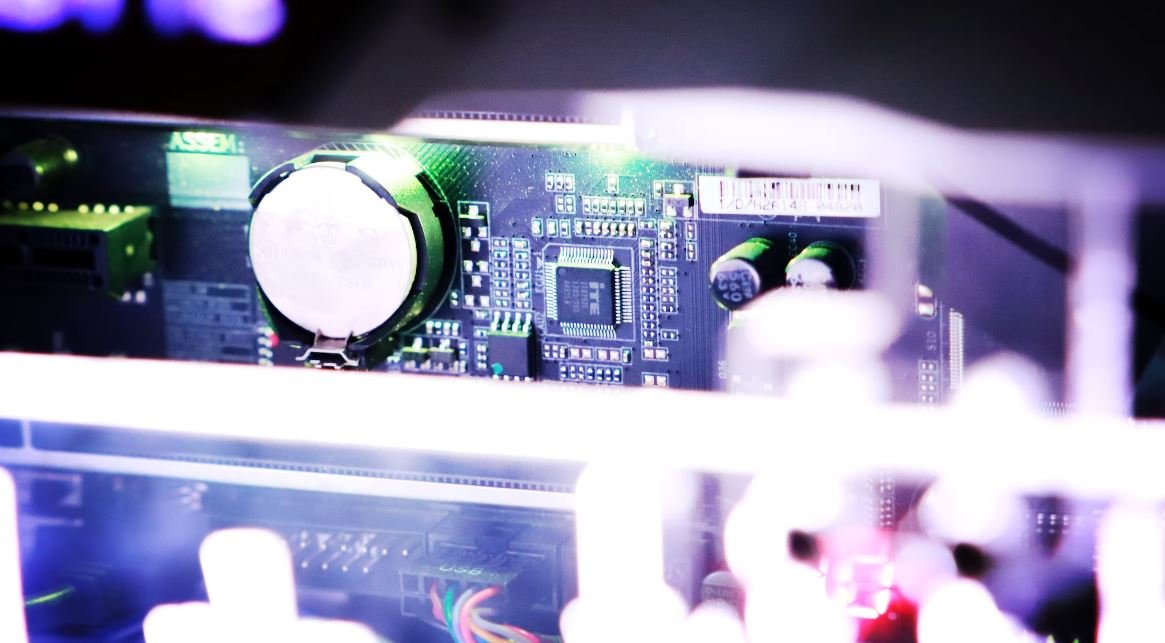Neural Network Simple Definition
A neural network is a computational model inspired by the structure and functioning of the human brain. These networks consist of interconnected nodes, also known as artificial neurons or “perceptrons”, that work together to process complex information.
Key Takeaways
- A neural network is a computational model inspired by the human brain.
- It consists of interconnected nodes called artificial neurons.
- Neural networks can process complex information.
How Neural Networks Work
Neural networks work by utilizing input data and weights to make predictions or decisions. Each artificial neuron takes in multiple inputs, applies weights to these inputs, and passes the weighted sum through an activation function to produce an output. This process is repeated through the layers of the network until a final output is generated.
Over time, **neural networks can learn** from the data they are exposed to. Through a process called training, the network adjusts its weights based on the errors between its predicted output and the desired output. This enables the network to improve its performance and make more accurate predictions or classifications.
- The activation function helps determine the output of a neuron.
- Training improves the performance of neural networks.
Applications of Neural Networks
Neural networks have found applications in various fields, including:
- Image and speech recognition: Neural networks can be used to identify objects or patterns in images and recognize speech.
- Natural language processing: They can help process and understand human language, enabling features like virtual assistants.
- Financial forecasting: Neural networks can analyze and predict market trends based on historical data.
- Medical diagnosis: They can assist in diagnosing diseases by analyzing medical images or patient data.
These are just a few examples, and neural networks have shown potential in many other domains as well.
Types of Neural Networks
There are different types of neural networks, each suited for specific tasks:
| Network Type | Main Characteristics |
|---|---|
| Feedforward Neural Networks | Information flows in one direction from input to output. |
| Recurrent Neural Networks | Allow feedback connections, enabling processing of sequential data. |
| Convolutional Neural Networks | Specifically designed for image and pattern recognition tasks. |
*Neural network architectures can be customized based on the specific problem they aim to solve.
Advantages and Limitations of Neural Networks
Neural networks offer numerous advantages, such as:
- Ability to learn and adapt from training data.
- Capability to handle large amounts of complex data.
- Effective in solving complex problems with non-linear relationships.
However, they also have some limitations, including:
- The need for substantial computational resources.
- Difficulty in interpreting and explaining their decision-making process.
- Potentially lengthy training time for complex networks or large datasets.
Conclusion
Overall, neural networks are powerful computational models inspired by the structure and functioning of the human brain. They have various applications and can process complex information to make predictions or decisions. Although they come with advantages and limitations, neural networks have made significant contributions to the field of artificial intelligence.

Common Misconceptions
Neural Network Simple Definition
Neural networks are a complex and powerful tool for machine learning and artificial intelligence. However, there are several common misconceptions that people often have about neural networks:
- Neural networks are equivalent to human brains in their functioning.
- Complexity and size of neural networks always result in better performance.
- Neural networks can fully understand and explain their decision-making processes.
One common misconception is that neural networks are equivalent to human brains and possess the same level of intelligence and reasoning capabilities. While neural networks are inspired by the structure and functioning of the human brain, they are still far from replicating the complexities and nuances of human intelligence.
- Neural networks are inspired by the structure, not the full functionality, of the human brain.
- They lack consciousness, emotions, and other higher-level cognitive functions.
- Neural networks are purely mathematical models trained to perform specific tasks.
Another misconception is that the complexity and size of a neural network always result in better performance. While it is true that increasing the complexity and size can lead to improved performance in certain scenarios, there is no one-size-fits-all rule.
- Complexity can lead to overfitting, causing poor generalization on unseen data.
- Optimal network architecture depends on the specific problem and available data.
- Simple neural networks can often outperform overly complex ones in certain cases.
A further misconception is the belief that neural networks can fully understand and explain their decision-making processes. Due to their complex and nonlinear nature, neural networks are often seen as black boxes, making it challenging to interpret and explain their inner workings.
- Neural networks may lack interpretability, hindering trust and acceptance in critical domains.
- Over-reliance on uninterpretable neural networks may raise ethical concerns.
- Different techniques such as feature visualization and attribution methods can provide some insights, but full interpretability is not always possible.

Introduction
Neural networks are a fundamental concept in artificial intelligence that simulate how the human brain functions. They are composed of interconnected nodes, or “neurons,” that work together to process information and make predictions. To provide a deeper understanding of neural networks, the following tables present various aspects and examples:
Table: Applications of Neural Networks
Neural networks have found applications in numerous fields. They are utilized to enhance performance and enable complex functionalities in tasks like image recognition, natural language processing, and financial prediction.
| Field | Application |
|---|---|
| Medicine | Disease diagnosis and prognosis |
| Finance | Stock market prediction |
| Automotive | Self-driving cars |
| Entertainment | Recommendation systems |
Table: Comparison of Neural Networks vs. Traditional Computers
Neural networks differ from traditional computers in their structure and problem-solving approach. The table below illustrates some key differences between them.
| Aspect | Neural Networks | Traditional Computers |
|---|---|---|
| Processing | Parallel | Sequential |
| Learning | Adaptive | Programmed |
| Data | Patterns | Explicitly provided |
| Accuracy | Error-tolerant | Absolute |
Table: Types of Neural Networks
There are various types of neural networks, each designed for specific tasks. The following table outlines some popular neural network architectures in use today.
| Type | Purpose |
|---|---|
| Feedforward | Pattern recognition |
| Recurrent | Time series prediction |
| Convolutional | Image classification |
| Generative Adversarial | Generating realistic images |
Table: Neural Network Components
Neural networks are composed of various components that contribute to their functionality. The table below provides an overview of these essential components.
| Component | Description |
|---|---|
| Input layer | Receives input data |
| Hidden layer | Processes data through interconnected neurons |
| Output layer | Provides the network’s final prediction or output |
| Weights | Values assigned to connections between neurons |
Table: Neural Network Training Algorithms
Training algorithms play a crucial role in the performance of neural networks. The table below showcases some commonly used training algorithms.
| Algorithm | Description |
|---|---|
| Backpropagation | Adjusts weights based on prediction accuracy |
| Genetic Algorithm | Uses evolutionary principles to train the network |
| Levenberg-Marquardt | Finds optimal weights through advanced optimization |
| Particle Swarm Optimization | Simulates social behavior to converge on optimal weights |
Table: Neural Network Performance Metrics
Measuring the performance of neural networks is important to assess their effectiveness. The table below showcases some common performance metrics.
| Metric | Description |
|---|---|
| Accuracy | Percentage of correct predictions |
| Precision | True positives over true positives + false positives |
| Recall | True positives over true positives + false negatives |
| F1 Score | Harmonic mean of precision and recall |
Table: Advantages of Neural Networks
Neural networks offer numerous advantages over traditional computing approaches. The table below highlights some of the key advantages.
| Advantage | Description |
|---|---|
| Adaptability | Can learn and adapt from new data |
| Parallel Processing | Capable of processing multiple inputs simultaneously |
| Nonlinearity | Can approximate complex, nonlinear relationships |
| Robustness | Resistant to noise and partial failure |
Table: Neural Networks in Daily Life
Neural networks have become an integral part of our daily lives without us even realizing it. The table below showcases some common applications where neural networks are employed.
| Application | Example |
|---|---|
| Voice Assistants | Smart speakers like Amazon Echo or Google Home |
| Online Shopping | Product recommendation algorithms |
| Fraud Detection | Identifying fraudulent transactions |
| Image Filters | Snapchat’s various face filters |
Conclusion
Neural networks, an integral part of artificial intelligence, have revolutionized various industries and become ingrained in our daily lives. From helping diagnose medical conditions to powering self-driving cars, they have proven their efficacy and versatility. It is essential to understand the different types, components, and training algorithms associated with neural networks to fully appreciate their capabilities. As technology advances, neural networks will continue to push the boundaries of what is possible, enabling more intelligent systems and creating a promising future.
Frequently Asked Questions
What is a neural network?
A neural network is a computer model that is designed to mimic the way the human brain works. It consists of interconnected nodes, called neurons, which process and transmit information to each other.
How does a neural network learn?
Neural networks learn by adjusting the weights and biases of its neurons based on a given set of inputs and desired outputs. This process, known as training, enables the network to make accurate predictions or classify data.
What are the applications of neural networks?
Neural networks have a wide range of applications, including but not limited to image and speech recognition, natural language processing, pattern recognition, autonomous vehicles, and financial forecasting.
What are the advantages of using neural networks?
Neural networks have the ability to learn and adapt to complex patterns and data, making them highly effective in handling tasks that are difficult or impossible for traditional algorithms. They can also handle noisy or incomplete data and are capable of parallel processing.
Can neural networks be used for regression tasks?
Yes, neural networks can be used for both classification and regression tasks. While classification aims to categorize data into predefined classes, regression focuses on predicting continuous numerical values.
How many layers should a neural network have?
The number of layers in a neural network depends on the complexity of the problem it is trying to solve. Deep neural networks, which have multiple hidden layers, have shown to perform well in processing complex data, while shallow networks can be effective for simpler tasks.
What is overfitting in neural networks?
Overfitting occurs when a neural network becomes too specialized to the training data and performs poorly on unseen data. This happens when the network learns the noise or random fluctuations in the training data rather than the underlying patterns.
Are neural networks inherently black-box models?
Neural networks can be considered as black-box models to some extent, as understanding the exact reasoning behind their predictions can be challenging. However, techniques such as visualization, explaining the importance of input features, and interpretability algorithms are being developed to shed light on their decision-making process.
What is the difference between training and inference in neural networks?
Training refers to the process of optimizing the neural network’s weights and biases by exposing it to labeled training data. Inference, on the other hand, involves using the trained network to make predictions on new, unseen data.
What are the limitations of neural networks?
Neural networks can be computationally expensive to train and require large amounts of labeled data. They can also be prone to overfitting and may take a long time to converge. Additionally, interpreting the decisions made by neural networks is not always straightforward.




